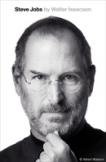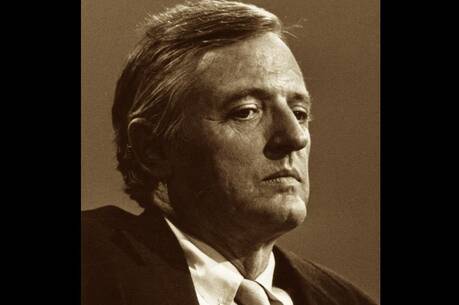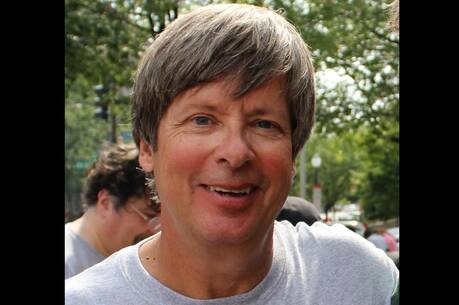I-Visionary
There are many ways to assess the legacy of the prickly, irascible, brilliant Steve Jobs, but perhaps the most perceptive critique came from Lev Grossman of Time magazine.
Commenting on Apple’s first iPad, Grossman wrote in April 2010: “The iPad shifts the emphasis from creating content to merely absorbing and manipulating it. It mutes you, turns you back into a passive consumer of other people’s masterpieces.”
The famously combative Jobs took Grossman’s words seriously. In the next generation of the iPad, Apple included more tools for creating content rather than simply consuming it. Yet six months after Jobs’s death from cancer, and in the shadow of Walter Isaacson’s weighty tome on his life, Grossman’s critique still provokes questions. What was Jobs’s principal contribution to American culture? Was he a true father of innovation, or was his real achievement the creation of a generation of expert consumers?
There is little doubt as to how Jobs would answer the question. The appearance of Isaacson’s biography so soon after Jobs’s death is a testament to his dogged determination to shape his legacy. It was Jobs who approached Isaacson to write the book, knowing full well that Isaacson’s previous subjects were Benjamin Franklin and Albert Einstein. Jobs clearly saw himself as an inventor in the tradition of these pioneers.
Is that judgment warranted? Judging from the positive press following Jobs’s death, the question seems already to have been answered. Yet a close examination of his life, seen through the lens of Isaacson’s impressive if unwieldy reportage, reveals a more complex story.
Jobs certainly saw himself as an artist. A basic fact of his life that many people did not know until his death was that he was not a tech guru. Unlike Bill Gates or Steve Wozniak, Apple’s cofounder, Jobs was not trained as a computer programmer. Technology fascinated him, of course, but his genius was in the marketing of the product, not the making of it. Jobs liked to say that he worked “at the intersection of humanities and sciences.” It is as good a description as any of his career. In a now famous commencement speech at Stanford University, Jobs explained that Apple’s innovative graphical interface was inspired by a class he took in calligraphy at Reed College.
Jobs treated artists better than most other people in his life. Isaacson’s biography is filled with anecdotes describing Jobs’s petulant behavior toward friends, family and colleagues. (His early years at Apple, before he was forced out in 1985, were particularly turbulent.) Yet people like John Lasseter, the cofounder of Pixar Animation Studios, and Jonathan Ive, the designer of Apple’s iconic products, generally commanded his respect. Jobs spent several years as chief executive at Pixar, the studio that produced “Finding Nemo,” “Wall-E” and other innovative films. Isaacson describes the experience as a formidable one: “It was at Pixar that he learned to let other creative people flourish and take the lead.”
The result, upon Jobs’s return to Apple in 1997, was a string of striking and novel products, each more popular than the previous. At Apple Jobs cultivated a culture of artistic integrity that drew upon his own passion for simple design and sleek European aesthetics. He treated every element of design and development with the utmost seriousness. Even the interior design of products mattered. Earlier in his career Jobs’s obsessive nature infuriated colleagues, but this time it worked to his advantage. When the first Apple store opened in 2001, complete with Italian stone Jobs chose himself, critics widely expected a failure. They were wrong. Apple’s Fifth Avenue store in New York, for example, grosses more per square foot than any other store in the world.
Isaacson’s biography overflows with this kind of detail. The result of hundred of interviews, including several with Jobs in his last days, Steve Jobs is a classic example of the challenges facing biographers in the digital age. Isaacson simply had too much material to work with. At almost 600 pages, the book reads like a series of well-reported magazine articles, but it has little sense of narrative sweep. Steve Jobs will be the subject of a great biography some day, but this is not it. More time and historical distance are required.
A future biographer will have to wrestle with the working conditions in Apple’s factories in China. Strangely, Isaacson ignores this part of the Jobs story. It may take a cultural critic to explore Jobs’s life and legacy fully, to discern how his inventions shaped the culture. Already we have seen the way the iPod has changed the way people listen to music. Singles and personal playlists take precedence over albums curated by seasoned producers. Yet the iPod has also given rise to social habits that have yet to be truly understood. The culture of tuning out, white earphones in place, has significant ramifications for social and political engagement.
The iPad, too, seems destined to change the way we choose to amuse ourselves. Before long, tablet devices may replace desktop computers, making the process of creativity that much more difficult. Even with the new additions prompted by Grossman’s review (for editing music and video, for example), the iPad is still primarily a vehicle for consumption. Why sit down to compose a song, or write a book review, when you can check email or stream movies on Netflix? Even reading on the iPad poses a challenge for the restless mind. The Thorn Birds cannot compete with Angry Birds.
Of course, Steve Jobs is not solely responsible for these developments. An eager public has made Apple the most profitable company in the world. With his exquisite attention to detail and cool artistic style, Jobs nearly perfected the digital experience. We are all living in his world now.
This article also appeared in print, under the headline “I-Visionary,” in the May 28, 2012, issue.







